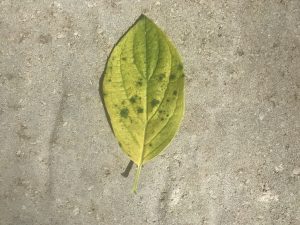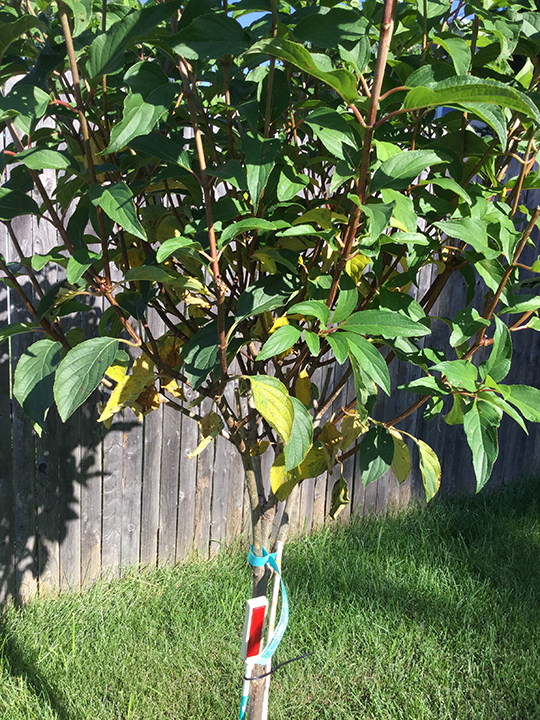Hydrangea Leaves Turning Yellow Can Be Fun For Everyone
Table of ContentsTop Guidelines Of Hydrangea Leaves Turning YellowThe Single Strategy To Use For Hydrangea Leaves Turning YellowSome Known Questions About Hydrangea Leaves Turning Yellow.Hydrangea Leaves Turning Yellow for Dummies
Hydrangea plants are recognized for their lovely blooms, yet often their leaves can transform yellow. This is usually an indicator that something is wrong and the plant requires your help.Hydrangea leaves transforming yellow can be a cause for concern. There are a number of factors why Hydrangea leaves turn yellow, and the majority of them are very easy to fix. Allow's look at one of the most common reasons Hydrangea leaves turn yellow and how to repair them. Hydrangea leaves usually transform yellow when the plant is overwatered.
When the roots of a plant are submerged in water for lengthy durations, they begin to stifle and rot. This procedure cuts off the roots' oxygen supply, triggering the fallen leaves to turn yellow and ultimately pass away. Overwatering can additionally result in various other troubles such as leaf decrease, origin damages, and fungal growth.
If you assume your Hydrangea is overwatered, the very best remedy is to allow the dirt dry completely prior to sprinkling again. It's additionally a good idea to examine the drainage of your pot or garden bed and make certain that water is not pooling around the plant's roots. Hydrangea plants require well-drained soil to flourish.
Everything about Hydrangea Leaves Turning Yellow
You must additionally ensure that you are not sprinkling your Hydrangea frequently. Watering when a week must be enough, and more frequently if the weather condition is hot and dry. Hydrangea leaves can also turn yellow if the plant is not obtaining adequate water. This takes place when the plant does not obtain adequate water, and the dirt starts to dry.

This is recognized as "fertilizer burn," It takes place when the plant's origins are subjected to also much plant food. Various other signs of fertilizer melt consist of brown or yellow leaves, wilting, and stunted development.
This will certainly help get rid of any excess fertilizer from the origins of the plant. It's additionally a great concept to decrease the quantity of fertilizer you are making use of. Feeding once a month during the growing period needs to suffice. If you are utilizing chemical plant food, it's best to utilize one that is weakened and applied according to the like this manufacturer's guidelines.
The Greatest Guide To Hydrangea Leaves Turning Yellow

If your Hydrangea is ravaged with bugs, treating the plant with neem or gardening oil is the best solution. It's also excellent to eliminate any afflicted leaves from the plant. You can do this by hand or with a set of pruning shears. It's additionally a good idea to inspect the plant frequently for parasites and eliminate them as quickly as you see them.
Hydrangea leaves can additionally transform yellow if the temperature level emphasizes the plant. The leaves of the plant will certainly turn yellow and begin to go down off.
If the temperature level stresses your Hydrangea, you need to relocate the plant to a place where it will certainly be shielded from the extreme cold or heat. You can likewise attempt to supply the plant with some partial shade if revealed to route sunlight. You can additionally try including mulch around the plant base to assist look these up control the temperature level.
What Does Hydrangea Leaves Turning Yellow Mean?
When the plant's origins are immersed in water for also long, they begin to rot. One of the most common root rot signs and symptoms is yellowing fallen leaves, as the fungus avoids the roots from taking in nutrients from the dirt.
Various other indicators of origin rot consist of stunted growth, wilting, and leaf decrease. Inspect the origins of your Hydrangea if it has origin rot. If they are black or click here to find out more brownish, after that they are possibly rotten. If some healthy roots are left, you can attempt to save the plant by replanting it in a new pot with fresh soil.
Water the plant carefully, making sure not to overwater it. If your Hydrangea is heavily impacted by root rot, starting with a new plant is best. Natural causes can also cause yellow hydrangea leaves. The most typical cause is the plant's age. As Hydrangeas age, their leaves will slowly turn yellow and brown before falling off the plant.
You can aid the plant by guaranteeing it is getting enough water and nutrients. One opportunity is that the plant is not getting enough water.